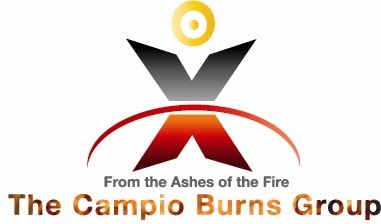|
Ah, a hot summer morning. Perfect for the beach. After a nice brisk swim in the refreshing tide, you curl up on your beach chair with your headphones and a book. As you sit contentedly, your eyes slowly fall shut in a mid-day nap. When you awake, the sun is a little lower in the sky, the people next to you have left, and your exposed skin is starting to look a suspicious shade of bright red. Will you know what to do?
You are babysitting the neighbor's kids, and as you are preparing dinner you turn around for a moment to rinse off the spoon. Suddenly you hear a clatter of pans and a high pitched yelp, not the "my-brother-pulled-my-hair" yelp, but a cry that sends your adrenaline into overdrive. You spin around and see the little girl clutching her hand, her tears streaming from her eyes, the tell-tale pot of hot dog water spilled on the ground. Will you know what to do?
A burn can be caused by heat (flames, hot grease, or boiling water), the sun (solar radiation), chemicals or electricity. When a burn breaks the skin, infection and loss of fluid can occur; burns can also result in difficulty breathing. If a burn victim has trouble breathing, has burns on more than one part of the body, or was burned by chemicals , an explosion, or electricity, immediately. Burns caused by flames or hot grease usually require medical attention as well, especially if the victim is a child or an elderly person.
Types of Burns
Superficial Burn (First Degree)
A first degree burn involves only the top layer of skin. The skin is red and dry and usually painful. The burned area may also swell. Most sunburns are superficial burns. This type of burn usually heals in 5-6 days without any permanent scarring.
Partial-Thickness Burn(Second Degree)
A second degree burn involves the top layers of skin. The skin is red with blisters that may open and weep clear fluid, giving the skin a wet appearance. The area may also appear mottled. The burn is usually painful and often swells. This type of burn usually heals in 3-4 weeks, and scarring may occur.
Full-Thickness Burn(Third Degree)
A third degree burn destroys all layers of skin and any or all of the underlying structures(fat, muscles, bones and nerves). The burn appears brown or black(charred) with the tissues underneath sometimes appearing white. This type of burn can be extremely painful or relatively painless if the burn destroys the nerve endings. This burn is critical and requires immediate medical attention.
Care for Burns
- Stop the burning. Put out flames or remove the victim from the source of the burn.
- Cool the burn. Use large amounts of cool water to cool the burn. Never use ice except on small superficial burns, because it causes body heat loss. If the area cannot be immersed, like the face, you can soak a clean cloth and apply it to the burn, being sure to continue adding water to keep the cloth cool.
- Cover the burn. Use dry, sterile dressings or a clean cloth to help prevent infection and reduce pain. Bandage loosely. Do not put any ointment on a burn unless it is very minor. Do not use any other home remedies, and do not break any blisters. For minor burns or burns with broken blisters that are not severe enough to require medical attention, wash the burned area with soap and water, keep it clean and apply an antibiotic ointment. Remember, some people can be allergic to topical ointments, so if you have any doubts, call your doctor for advice. For a victim of severe burns, lay him or her down unless he or she is having trouble breathing. Try to raise the burned areas above the level of the victim's heart if possible, and protect the victim from drafts.
Call EMS in any case of a chemical burn. Remove the chemical from the skin or eyes immediately by flushing the area with large amounts of cool running water until EMS arrives. Remove any clothes with chemicals on them, and be careful not to spread the chemical to other body parts or to yourself. Chemical burns can be caused by chemicals used in manufacturing or in a lab, or by household items such as bleach, garden sprays or paint removers.
Call EMS in any case of an electrical burn. Do not go near the victim unless you are sure the power source has been turned off. The burn itself will not be the major problem. If the victim is unconscious, check breathing and pulse. Check for other injuries, and do not move the victim because he or she may have spinal injuries. Cover an electrical burn with a dry, sterile dressing. Do not cool the burn. Prevent the victim from getting chilled. There may be two wounds, one where the current entered the body and one where it left, and they may be deep. Electrical burns can be caused by power lines, lightening, defective electrical equipment,and unprotected electrical outlets.
Solar Radiation Burn
Burns caused by solar radiation may be painful and may also blister. Cool the burn. You may want to put a product designed specifically for sunburn on the area; these products usually contain aloe vera and help cool the area and reduce the pain. Protect the burn by staying out of the sun. If you must go in the sun, wear a sunscreen with an SPF of at least 15 and reapply it frequently. Be sure to cover up any existing sunburn if you are going to be outside again.

Comments
Post a Comment